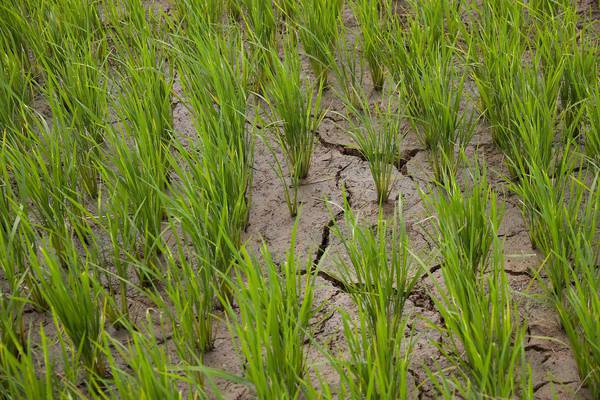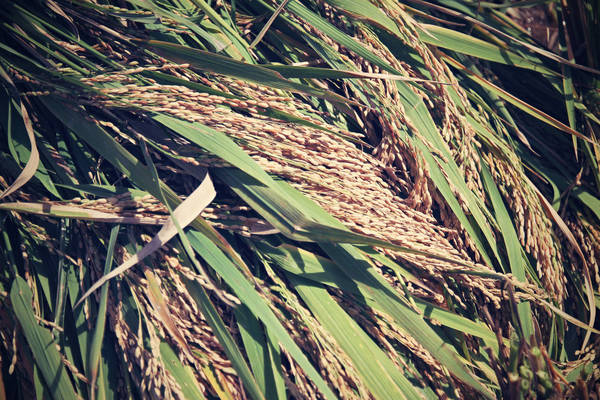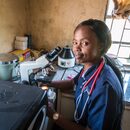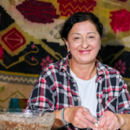El Niño is a phenomenon first observed by fishermen from South America manifested by heating the surface water of the Pacific Ocean. El Niño occurs when the warming of at least 0,5 °C lasts longer than three months. However, the average duration ranges from nine to twelve months. The phenomenon is repeated in two to seven-year intervals, and not only the Philippines suffers from a lack of harvest because of it.
 ,,This year a majority of my neighbours did not plant rice during baksalan cropping season from June to October. They say that rice needs a lot of water. But there was no rain. The land is dry ’’, tells Anna Alvarina (43), one of the women farmers from San Miguel a typical story from the traditional rice production area in Eastern Samar, Philippines.
,,This year a majority of my neighbours did not plant rice during baksalan cropping season from June to October. They say that rice needs a lot of water. But there was no rain. The land is dry ’’, tells Anna Alvarina (43), one of the women farmers from San Miguel a typical story from the traditional rice production area in Eastern Samar, Philippines.
,,I didn’t want to stay passive’’, Anna continues. ,,When I heard about the System of Rice Intensification (SRI) I told myself why don’t to give it a try? I have nothing to lose. The other farmers were too sceptical about the method, but now they are wondering how comes that I have a bigger harvest than ever before. Despite the lack of rain, I harvested 1030 kg from 1ha of my SRI field. That is almost 30% more than in the past, when I used the traditional method. That’s very positive for me. Even though I am only a tenant on this field and almost a half of my harvest goes to the land owner, it still pays off thanks to the SRI. I’m happy about my decision now. Even my neighbours are asking me now for some advice about the SRI!’’, smiles Anna.
The rice farmers in Samar island are among the people most threatened by rising temperatures and decreasing amount of rainfall. The main problem is the majority of rice production areas are dependent on rain and the artificial irrigation systems are scarce. The System of Rice Intensification seems to be a promising method that enables farmers to adapt to the climate change. In some areas monitored by Caritas Czech Republic, farmers implementing the SRI were the only ones who achieved a decent harvest.
An official document of UN OCHA (United Nations Office for the Coordination of Humanitarian Affairs) stated, that in the four-month prospect, the 85 % of the area of the Philippines will experience drought. It means, the average rainfall will be lowered to 60 % for more than 3 consecutive months. Practically it means that more than 32, 000 ha of rice fields will remain idle due to dry conditions and about 66 000 farmer’s families will be affected.
 The main driving agent of these extraordinary droughts is the El Nino phenomenon, which is slowly reaching its peak. According to the Philippine Atmospheric, Geophysical and Astronomical Service Administration (PAGASA), the strong El Nino phenomena affecting now the Oceania region has a potential to be the strongest and most severe event in the period of past 70 years.
The main driving agent of these extraordinary droughts is the El Nino phenomenon, which is slowly reaching its peak. According to the Philippine Atmospheric, Geophysical and Astronomical Service Administration (PAGASA), the strong El Nino phenomena affecting now the Oceania region has a potential to be the strongest and most severe event in the period of past 70 years.
According to International Rice Research Institute (IRRI), Philippines are among the biggest importers of rice in the world. The SRI might be addressed by national authorities as a technology which can boost the national rice production and help to reach subsistence level. For its low cost and low technology need such a method can be applicable in rural areas around the world. SRI has been proved in many developing countries around the world as a technology which can increase productivity; ensure food security and; mitigate carbon sinks and lowers emissions.
Local farmers learn to understand following: the climate change requires changing their habits. Shifting the traditional cropping seasons accordingly and adopting the new methods will be crucial for their future subsistence. The faster they adapt, the less devastating will be the consequences.







